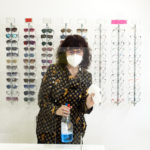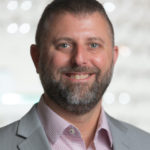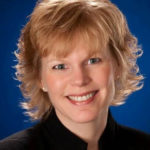By Dave Anderson, OD,
Dori Carlson, OD,
and Gina Wesley, OD, MS, FAAO

July 15, 2020
Practices are much altered from the way they were at the start of 2020. Three ROB contributors share a few of the big changes in their offices, including how they are adapting to keep patients and staff safe and rebuild revenues.
 Greater Management of Patient Flow
Greater Management of Patient Flow
Dave Anderson, OD
Before the pandemic, we would allow any patient to walk in at any time, and we were flexible if a patient was running late. Since we have such a strict protocol for cleaning now, we cannot allow patients to run late. If they are running more than five minutes late, we ask them to reschedule. Fortunately, we have rarely run into an issue with our new on-time requirement, as we explain to patients the importance that they arrive on time, and we remind them of this just prior to their appointment by text, e-mail or phone, depending on how the patient indicated they prefer to be contacted.
Since reopening, we have added online history and intake, including gathering insurance consent and the patient’s driver’s license before they arrive.
In addition, we have added telemedicine to our protocol, with the doctor who would normally be working on a given day taking the telemedicine visits. On average, we see 4-5 a day, and this helps us keep patients safe, while still allowing us manage some medical eyecare issues in person. We use telemedicine as a form of triage, and if the patient needs to be seen, that doctor is able to find time on the schedule for them. Otherwise, the doctor is often able to begin management of the condition while keeping the patient at home.
Other Articles to Explore
In the exam room, we have shields on the slit lamp and phropter. The doctors always wear face masks, and gloves depending on the procedure. We usually have scribes, but have moved them to a nearby room, and they are on the intercom/phone system to listen and record the information from the exam. We also wash hands as we enter, between procedures and before we leave the room. This helps the patient understand the efforts we are taking to ensure their safety, and helps eliminate contamination as we enter and exit rooms.
Handshakes and hugs were common place in our office since we operate as a family business, with every patient a part of our family. We are having a hard time with the new normal, but have tried to make light of it, with distanced non-contact fist bumps and elbow bumps. Some patients insist on a handshake, and I lean towards putting patients first. I always insist on safety first, but on rare occasions I will shake someone’s hand, and then will wash my hands and insist the patient also wash their hands and use hand sanitizer after shaking.
 Optimizing Expanded Space of New Office
Optimizing Expanded Space of New Office
Dori Carlson, OD
We had recently opened a new office, so we have more space than we did in the past. We have a locked door and meet people at the front door, taking temperatures and providing them with hand sanitizer. As a result, we have controlled foot traffic. Patients are allowed to take frames off the board and try them on, however we have a basket to place those frames into for sanitizing.
We struggled with how to allow patients to see the frames, as no one can truly tell if they like frames while wearing a face mask. The optical staff has had patients group the frames they like, and then allow the patient to take off their mask while the optician steps away from the patient. We also allow patients to take frames home on approval. We’ve done that for years, so it really wasn’t a change to our usual business practice, and has always been a service appreciated by our patients. We then thoroughly sanitize frames that are returned to us.
In a time when our revenues have been greatly reduced, I’ve tried to make decisions that make the most sense financially. The virus has been proven to be sensitive to soap. So, we’re washing frames in soap and water. Traffic flow in the optical is controlled, so it hasn’t been difficult to keep up with cleaning frames.
Obviously, at some point we hope to no longer have our front door locked or wear face masks. We have become leaner and meaner in our financial operations, which is not a bad thing. There will be many positives that come as a result of this pandemic. Staff has been working to streamline any and all processes in the office. It’s an ongoing and evolving process.
 Safety First for a Well-Trained Staff
Safety First for a Well-Trained Staff
Gina Wesley, OD, MS, FAAO
We have removed and/or spaced out most optical seating. We also now only have one chair at our optical dispensing counter to limit the number patients who can get adjustments or dispenses at one time.
Patients are wearing masks per our requirements, and opticians are bringing them frames to try on versus the patient selecting them from the board. We then place any frame that is handled in a dispensing tray to be disinfected before putting them back on the board.
I purchased a microcide product that I apply once per month that makes it very difficult for microbes to live on a surface. This was applied to all touchable surfaces, such as door handles, counters, toilets, sinks and chairs. It will be reapplied every 30 days. A bottle cost about $200, but I also purchased a $10 mister to apply it, so only used about one-eighth of the bottle in the first application. I’m anticipating this bottle will last me at least six months.
I already had been using Pure-N-Clean for my hyopchlorous spray/cleaner, so I purchased more of that to wipe down surfaces before and after patients. Optical staff wears face shields for extra protection, using bleach wipes on surfaces, as well as the Pure & Clean spray between patients. All staff are wearing masks at all times, and we have hand sanitizer dispensers throughout the office.
All staff was required to read through our disinfection protocols and how we are to manage this with patients, along with information on how they can protect themselves.We have an emergency protocol in place that follows the Centers for Disease Control guidelines as well as the American Optometric Association guidelines for reopening.
We have used Vision Source resources, in addition to AOA resources, to create our own training. I’ve found some useful links on the CDC’s web site for appropriate mask handling/removal as well as glove handling/removal. And, as I remind my staff, hand washing for at least 20 seconds is still required.
Dave Anderson, OD, is a partner with Miamisburg Vision Care in Miamisburg, Ohio, and a partner with wEyes Guys. To contact: doca@burgvision.com
Dori Carlson, OD, FAAO, is owner, along with her husband, Mark Helgeson, OD, FAAO, of Heartland Eye Care, P.C. To contact: dori.carlson@gmail.com.
Gina Wesley, OD, MS, FAAO, owns Complete Family Eyecare of Medina in Medina, Minn. To contact her: drwesley@cecofmedina.com

























